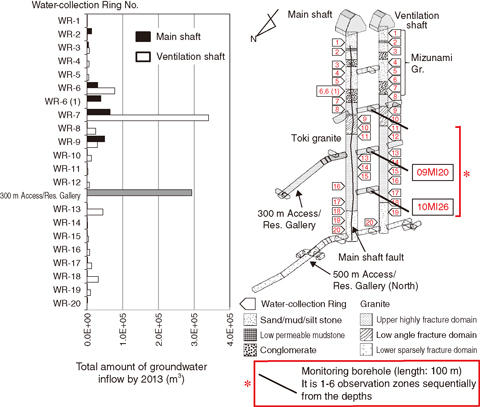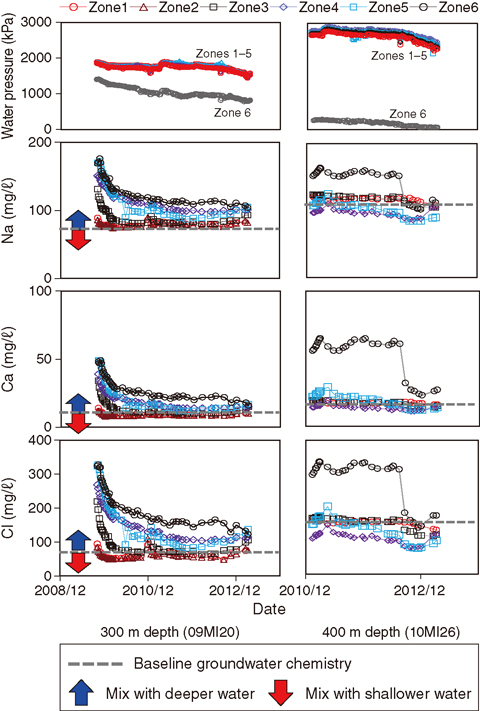
Fig.8-12 Groundwater inflow into the gallery and the monitoring point of hydraulic pressure/chemistry

Fig.8-13 Changes of water pressure and chemistry with time at depths of 300 m and 400 m
The construction and operation of a large underground facility, such as a repository of high-level radioactive waste, probably changes the groundwater environment, possibly impacting the suitability of the selected disposal site. This study identifies the hydrochemical changes in groundwater up to depths of 500 m in response to 10 years of construction and operation of the Mizunami Underground Research Laboratory (MIU).
Geology, geological structure, and the baseline of groundwater pressure/chemistry had been identified by borehole investigation from ground surface prior to the excavation of the gallery. Groundwater inflow at these depths was measured (Fig.8-12). Hydrochemical change around the gallery was observed at monitoring boreholes of various depths (Fig.8-12).
Groundwater drawdown was observed below the mudstone layer at a depth of about 50 m. The groundwater level, at a range of approximately 100 m from the gallery, was lowered by 150 m from the baseline condition in March 2015. Moreover, a change in the groundwater chemistry due to hydraulic drawdown has also been identified (Fig.8-13). Based on the observation results and multivariate statistical analysis, the following fundamental insights regarding the impact of an underground facility upon the geological environment have been obtained.
• The hydrochemical disturbances during facility construction and operation are caused by the upconing of deep groundwater around the deepest part of the shaft and gallery and by the infiltration of shallow groundwater according to groundwater drawdown.
• Hydrogeological structures, such as low-permeability clay layers and faults with an abundance of clay materials suppress the hydraulic impact, whereas the impact occurs intensely in permeable conglomerates and fracture zones.
Designs and plans for underground facility layouts that take hydrogeological structures into consideration aim to enable comprehensive management that minimizes the hydrochemical impact.
We continue to observe the long-term hydrochemical change around the facility and start a drift-closure experiment to understand hydrochemical recovery processes from the disturbed groundwater condition.